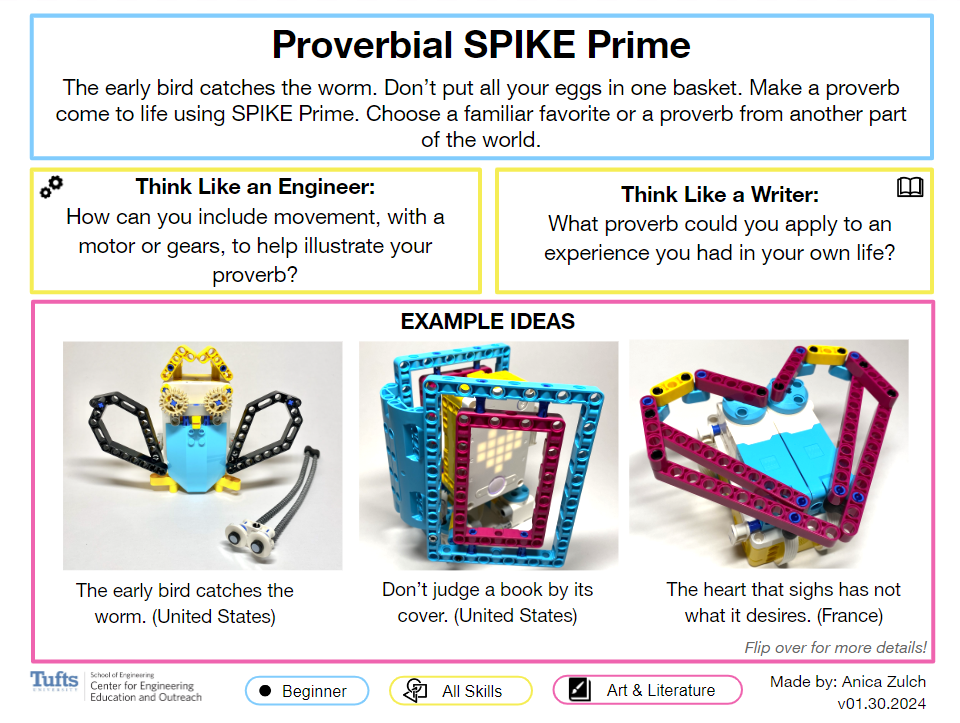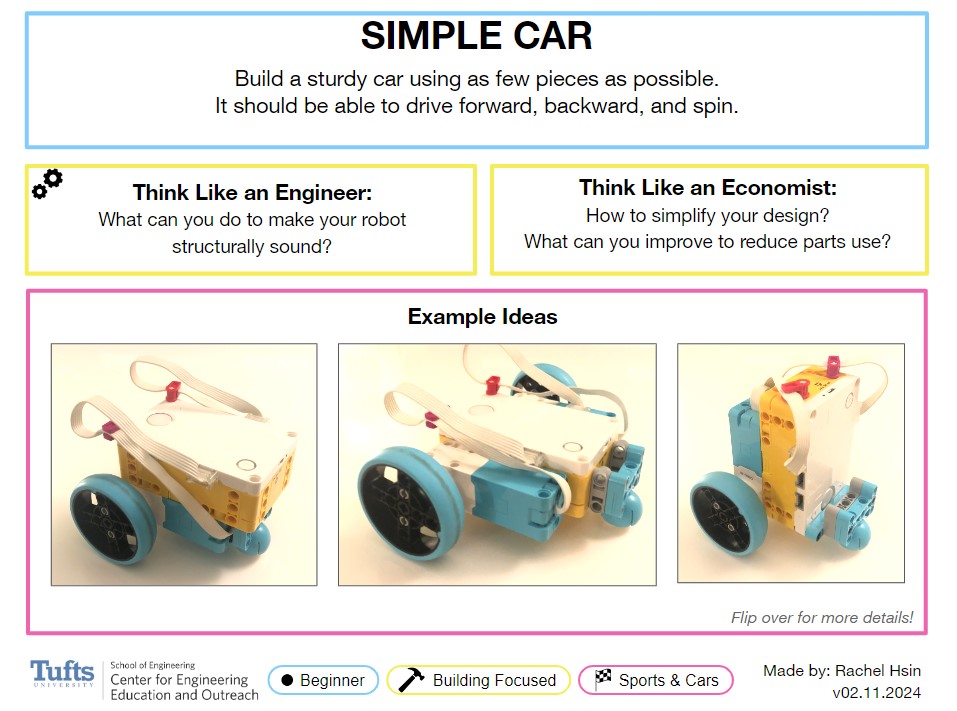
Proverbial SPIKE Prime
Beginner, All Skills, Art & Literature

Ball Thrower
Beginner, Physics and Science, Mechanics & Movement

Clean Sweep
Beginner, All Skills, Task Helpers

Space Exploration
Beginner, All Skills, Innovative Creations

Percussion Playtime
Beginner, All Skills, Music & Movies

Simple Car
Beginner, Building Focused, Sports & Cars

Garden
Beginner, All Skills, Animals & Nature

Puppet Show
Beginner, All Skills, Art & Literature





















